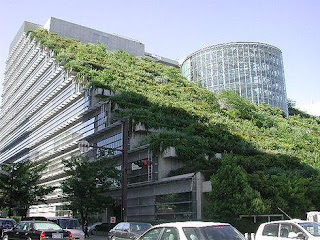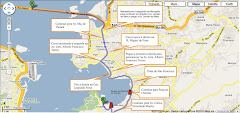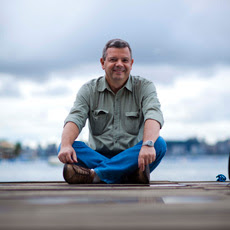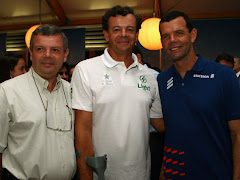sexta-feira, 18 de fevereiro de 2011
Futuro de baixo carbono demandará mudanças na infraestrutura das cidades e no campo
Significant changes to infrastructure are required for a low carbon future
In a low carbon economy, buildings and infrastructure will look and feel quite different from today's landscape
Any significant change in how an economy works has physical consequences. You can see it and touch it, often smell it too. Go back to an area you used to live in or know well, and you can read the economic changes which have taken place, in the shops which have opened or closed, the look of the houses, the amount of traffic on the roads. Think of any major economic transition, such as the industrial revolution, and you can visualise the factories, railways, and urban areas that were built.
In thinking now about "the good transition", the transition to a green economy in which we can live within the planet's limits, there is a physical aspect to this change, alongside the more abstract questions about how finance circulates and what requirements are written into company law.
What sorts of buildings and infrastructure would there be?
Probably the most visible consequence of such a transition in urban areas would be in the shift to decentralised, distributed, energy generation. Every building is potentially an energy source, particularly through solar energy (as in Freiberg, Germany). Along with that, though less visibly, would go a smart grid, an electricity grid designed to deal with decentralised generation, with millions of consumers who are also producers, therefore essentially a two-way grid rather than one simply leading from generator to consumers.
Along with a change in energy supply, there would be a change in transport systems. Parked cars would be plugged in to electricity sources. Spain is likely to see a million electric vehicles on the road 3 or 4 years from now. More areas would be car-free. New railway and light railway lines would be opened, in some cases reopening lines closed under the Beeching closures of the 1960s. March 15 this year marks the 50th anniversary of Dr Beeching taking charge of the railways: not a cause for celebration, though perhaps it should be marked in some way.
Advertising in its current form would be regarded as sending messages every bit as questionable and controversial as party political broadcasts, therefore needing to be balanced by a right of reply, funded by the advertisers, so that the dubious claims being made could be opened up to public scrutiny.
In rural areas, there would be a very visible change in the landscape, with more trees, valued amongst other reasons because of their capacity for storing carbon, and less land being taken up by livestock and the crops necessary to feed them. This shift in land use implies a shift in diet. Perhaps it will be carbon sequestration and land use change, rather than ethical concern about the principle of eating animals, which will drive change in eating habits.
Changes such as these would not turn the UK into a utopia. Far more would be needed to get anywhere near that. However these suggestions provide a flavour of what we would need to see around us in 10 or 20 years time if we took seriously in the near future the idea of moving off the business as usual trajectory. That trajectory is not only proving devastating to ecosystems worldwide, but also in the process destroying the foundations of economies, all of which are based in the final analysis on the most basic physical things we easily take for granted: plants, animals, metals, air, water, soil. Although economics is capable of very highly sophisticated abstractions, all of that is of little value if we do not concern ourselves with these basics.
Fonte: The Guardian
Assinar:
Postar comentários (Atom)























Nenhum comentário:
Postar um comentário
Contribua. Deixe aqui a sua crítica, comentário ou complementação ao conteúdo da mensagem postada no Blog do Axel Grael. Obrigado.